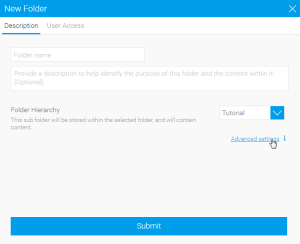Page History
...
| Content Icon | Content Type | Description |
|---|---|---|
| All | This option allows you to view all types of content available to you, including Dashboard Tabs, Discussion Streams, Reports, and Storyboards. | |
| Dashboards | This option restricts the content you're viewing to only the Dashboard Tabs that are available to you. | |
Presentations | This option restricts the content you're viewing to only the presentations that are available to you. | |
Themes | This option restricts the content you're viewing to only the Present themes that are available to you. | |
| Discussion | This option restricts the content you're viewing to only the Discussion Streams that are available to you. | |
| Reports | This option restricts the content you're viewing to only the Reports that are available to you. | |
| Stories | This option restricts the content you're viewing to only Stories that are available to you. | |
| Storyboards | This option restricts the content you're viewing to only the Storyboards that are available to you. Note: This option only appears if there are any Storyboards in your system. This is because Storyboard has been replaced by Present, however therefore existing storyboards can still be viewed, although but not modified. | |
| Views | This option filters the browse page tabs to only Views. | |
| Transformation Flows | This option filters the browse page tabs to only data transformation flows. |
...
- Hover over an existing folder and click on the icon.
- Click on the New option.
- The next step is to define if this is a Folder or a Sub Folder.
- Folder: this is used as a container for Sub Folders, and will never directly hold content. Leave the Folder Hierarchy option set to Top Level (which it is by default).
- Sub Folder: this is used as a container for content, and as such can have security and other content-related settings applied. Select a Parent Folder to place this Sub Folder into.
- Next, you can define your advanced optionsyour Advanced Options.
- Folder: there is only one option available for a Folder.
- Sort Order - Define a specific sort order value if you don’t wish the folder to be sorted alphabetically. 0 will result in standard sorting.
- Sub Folder: there are a range of options available for Sub Folders.
- Sort Order - Define a specific sort order value if you don’t wish the folder to be sorted alphabetically. 0 will result in standard sorting.
- Draft Content Default Folder - Define if this folder will be used to store all draft content until it is saved initially. There can only be one folder to save draft content in a system.
- Default View Folder - Define if this folder will be used to store views that are automatically created. There can only be one of these folders folder to save draft views in a system.
- Version History - Choose whether to save historical result sets for the contents of this folder (in which case the following settings can also be defined), or save only the current version.
- Max Size - Define the amount of storage available for caching content in this folder (in KB).
- Max Versions - Define the number of historical result sets that will be accessible, per report.
- Max Age - Define how long the historical result sets should be stored before they are deleted.
- Folder: there is only one option available for a Folder.
- Finally, if this is a Sub Folder, you can define the User Access settings, otherwise proceed to the last step.
- Expert Approval - Define if publishing into this folder requires approval by an expert.
- Folder Security:
- Unsecure - This option is used in conjunction with a multicast licence and guest login to provide access to content in this folder without logging in. This behaves like a Public folder for users that are logged in.
- Public - All users with functional access to reports, dashboards, and/or storyboards will be able to see the content stored in this folder.
- Private - Only the users specified here will be able to see and interact with the content stored in this folder, based on the level of access specified.
- Click Submit to create your folder.
...


